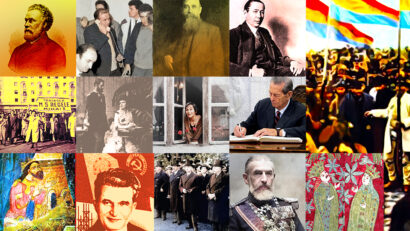Slavery west of Pontus Euxinus
Slavery is unacceptable in the contemporary world.

Steliu Lambru, 23.10.2023, 14:00
Slavery is unacceptable in the contemporary world. Seen as one of the worst forms of violation of human dignity, it is a crime punishable under both international law and national law. But in the past, slavery was not always associated with a low status because the perception of man was different from now. A man without freedom can hardly be happy, but the slave of the past was not always that miserable, exploited man, whom his owner could dispose of.
Slavery is attested by documents in all historical periods and in all inhabited areas. Its presencecan also be identified in the current Romanian space. The Black Sea shore or the Pontus Euxinus were first colonized by the Greeks in the 8th-6th centuries BC. Thus, they came into contact with the other populations called barbarians, with whom they established economic relations and alternative coexistence of peace and conflict. One of those populations was the Getae, ancestors of the Romanians, who lived on the west bank of the Euxine. The relations between the Greeks and the indigenous people also involved slavery, more precisely labor in agriculture, mining, crafts, construction and public works of the cities.
Archaeologists have looked for both material and written evidence to support their hypotheses of the existence of slaves. One of them is DragoșHălmagi, archaeologist with the “VasilePârvan” Institute of Archeology of the Romanian Academy, who focused on both types of sources. Hălmagi says that a more suitable term to describe the social and economic relations of the Greeks with the Getae is that of “dependent population”: “In Pontus, the Greeks did not work with slaves, although the slave trade in Pontus, in Thrace and even in Scythia is well known, both from literary and epigraphic sources. Having no sources proving slave labor in Pontus, the labor here was provided by the dependent populations. The problem of labor in agriculture, a very important branch of the ancient economy is discussed, rather than the one of domestic slaves. According to the Greek authors, Plato and Aristotle, it was generally good to bring in slaves, speaking different languages, to avoid the danger of rebellion. Since the Greeks were surrounded by the Getae in the west, they could not have taken slaves from among them. It would have been too much of a danger, which is why they preferred to work with them that way. Many inscriptions speak of Greeks living together with barbarians.”
One of the conclusions that can be drawn from what has been found following archaeological excavations, may be that slavery was not necessarily a tragedy in the life of ancient man. DragosHalmagi: “When we look at places where we know there were slaves, they have an archaeological presence that is very similar to that of the free people. They were somewhat poorer graves, with fewer vessels, with fewer metal objects. But there is no indication that a certain grave is that of a slave. Archaeologically, there is nothing to distinguish a slave from a free man. Many times the slaves took on the traditions of the place, and this can be seen in the slaves of the family who looked, in terms of clothing and graves, just like those of the families they were a part of.”
Dependent populations were those who had a status equal to that of slaves. Labor was recruited from among them, labor having an uncertain social status. Very few written sources mention the use of slaves in agriculture, but excavations have found that the use of slaves in crafts and construction was very likely, especially where fortifications, settlements or fortified farms were found.
The Greek historical sources do not only refer to the Getae, they speak of a diversity of nations. In addition to the Getae, Scythians, Sarmatians, Thracians and others appear in Hellenistic texts of the 4th to 1st centuries BC. They formed true ethnic mosaics in which political authority was exercised by the military power of one leader at a time. According to DragoșHălmagi, a reliable source for this thesis of ethnic mixture is the Latin poet Ovid: “The first author who says that the Getae were sure here is Ovid. But Ovid says more than that. He doesnt just say Getae, he says “countless other populations here”. Sometimes he does it to impress his audience, sometimes he talks about real things, its hard to know. There are several fragments in Ovids writings where the Getae and Sarmatians appear together, the Getae and Sarmatiansbeing the ones who had bows.”
The man of the past was very different from what modern man is, although humanity brings us all together. And the different perception of slavery then and now, shows the huge difference that thousands of years of civilization has made. (EE)






























